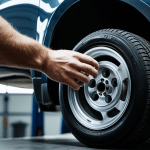Importance of Leather Seat Maintenance
Regular leather seat maintenance is vital for preserving the durability of your vehicle’s interior, especially in the unique climate of the UK. Leather, a highly desired material for car seats, requires frequent care to prevent wear and tear. Regular maintenance helps in extending the life of leather, ensuring it remains supple and resistant to damage. Neglecting maintenance can lead to premature cracking and fading, ultimately resulting in costly repairs or replacements.
The regional climate of the UK, characterised by high humidity levels and fluctuating temperatures, can have a significant impact on leather seats. The dampness can encourage mould growth, while abrupt temperature changes can cause the leather to contract and shrink, increasing the risk of cracks.
Sujet a lire : Unlocking the Secrets of Drag Racing: Pro Tips to Enhance Your UK Car’s Suspension Configuration
Failure to adequately maintain leather seats doesn’t just affect aesthetics. It may also dent your finances. Over time, small issues can accumulate into significant damage, demanding repairs that are both time-consuming and expensive. Thus, adopting a proactive maintenance routine safeguards leather and saves money in the long run. A small investment in preventive care can prevent the need for large expenditures in repairs or replacement, highlighting the importance of regular leather seat maintenance.
Cleaning Techniques for Leather Seats
Effective leather seat cleaning ensures longevity and pristine appearance, particularly in the variable UK climate. Selecting the right cleaning solutions is crucial—opt for products specifically designed for leather to prevent damage. In the UK’s humid conditions, it’s advisable to use moisture-controlled cleaning agents to prevent mould and mildew.
Sujet a lire : Enhance Your Car’s Cooling System: Unlock Peak Performance Amidst the UK’s Weather Variability
Step-by-step cleaning methods help maintain the lustre of leather seats. Begin by vacuuming to remove dirt and debris, preventing scratches during the cleaning process. Use a soft cloth or sponge with a mild leather cleaner, working in circular motions. Finish with a clean, dry cloth to remove any excess cleaner, ensuring the leather stays supple.
Avoid common cleaning mistakes to protect your valuable seats. Never use harsh chemicals or excessive water, as this can dry out and damage the leather. Similarly, abrasive tools should be avoided to prevent scratches and deterioration.
Focusing on these strategies not only safeguards the leather’s appearance but also its structural integrity. By regularly employing the right techniques and choosing suitable UK products, you can significantly extend the life of your vehicle’s leather seats while keeping them looking their best.
Conditioning Leather Seats
Leather conditioning plays a pivotal role in maintaining your vehicle’s interior, as it helps prevent cracks and fading that can arise from regular use and environmental factors. Leather, being a natural material, loses its inherent oils over time, making it prone to drying out and becoming brittle if left unchecked. Applying nourishing products is essential, replenishing these oils and ensuring that the leather remains supple and strong.
In the UK, it’s advisable to choose conditioning products specifically formulated for the local climate. The high humidity and occasional harsh weather necessitate a product that provides both moisture and protection. Popular choices include creams and balms enriched with beeswax or lanolin, which offer deep conditioning without leaving a greasy residue.
Determining how often to condition your seats largely depends on your vehicle’s usage and the environment it encounters. A general guideline is to condition every three to four months. However, if your car is often exposed to harsh sunlight or fluctuating temperatures, more frequent treatment can be beneficial. Keeping to a consistent leather care routine protects against premature wear, helping your vehicle interior maintain its luxury appeal.
Protecting Leather Seats
Taking proactive measures to ensure leather protection is crucial in maintaining the premium quality of your car’s interior. The damaging effects of UV rays are often underestimated, yet they cause significant fading and drying over time. Investing in products providing UV protection helps shield against sun damage, keeping the leather’s colour vibrant and surface smooth.
For waterproofing treatments, consider products that repel moisture without compromising leather breathability. These treatments prevent liquid absorption, effectively safeguarding the leather from spills and stains. Particularly in the UK, where sudden rain showers are common, waterproofing is an essential step in protecting your seats.
Additionally, preventing stains and spills requires extra care. Using seat covers during risky activities, such as transporting pets or carrying food, can minimise accidental damage. For day-to-day protection, regular cleaning assists in maintaining the surface, ensuring that any accidental spill is easy to manage.
Incorporating these protective strategies elevates the resilience and longevity of leather seats. These actions not only preserve the aesthetic appearance but also ensure the interior remains inviting and luxurious for years to come. Embrace a routine focused on protection, and enjoy the lasting benefits it brings to your vehicle’s leather.
Regional Considerations for UK Leather Care
Taking into account the UK’s unique climate is vital for effective leather seat care. The frequent rain and humidity require products that repel moisture to avoid damage, as wet leather can lead to mould or mildew growth. As the weather varies seasonally, different maintenance efforts are necessary throughout the year.
Seasonal Maintenance Tips
During winter, protect leather against cold and dampness which can exacerbate drying and cracking. Using additional conditioning products helps maintain suppleness. In the summer months, apply UV protectants to counteract long sunlight exposure that can cause drying and fading.
Local services offer specialized treatments tailored to these climatic conditions. Brands like Autoglym and Renapur are favoured for developing products tailored to the UK, allowing vehicle owners to find items that accommodate these specific conditions.
Implementing these strategies enhances the durability and appearance of leather seats. By understanding regional needs and seasonal challenges, UK car owners can effectively care for their leather interiors, ensuring they remain in optimal condition while extending their lifespan. Recognizing these environmental factors as part of regular maintenance is crucial in achieving long-term success in leather care.
Common Pitfalls in Leather Maintenance
Maintaining leather seats can be deceptively tricky, and avoiding leather care mistakes is crucial for longevity. Many people assume that all leather products are created equal or that everyday cleaners can suffice for leather. This often leads to unfortunate maintenance missteps that can irreparably damage seats.
Common misconceptions include using water-heavy solutions or household detergents, which may seem harmless but actually dry out leather. Another frequent error is neglecting to test cleaners on inconspicuous areas first, leading to widespread deterioration if the product reacts poorly.
Watch for red flags indicating leather damage: loss of luster, noticeable stiffness, or the emergence of fine lines. These are early signs of wear that suggest deeper layers may be compromised. Ignoring these indicators can exacerbate the problem, making repairs more challenging.
Addressing such issues promptly can prevent them from escalating. Recognizing these telltale signs can protect against further damage and prolong the leather’s lifespan. Therefore, vigilance paired with the right care strategies can ensure your leather seats remain in excellent condition. Understanding and mitigating these pitfalls is essential for effective leather maintenance.
Professional vs. DIY Leather Care
In the realm of leather maintenance, there’s ongoing debate: DIY or professional services? Both options have unique advantages. DIY leather maintenance offers the satisfaction of personal touch and cost-effectiveness. With a plethora of guides and accessible products, many owners find it manageable to perform regular upkeep.
However, the precision required to ensure optimal longevity might be taxing for beginners. DIY methods can sometimes lack the finesse needed to tackle more substantial issues like deep cracks or stains without risking further damage.
Professional services, in contrast, provide extensive expertise and tools designed for thorough care solutions. They can address advanced deterioration signs using specialised techniques, which reduce the likelihood of exacerbating existing problems. This option is ideal when dealing with significant wear that demands immediate intervention.
Cost differences are worth noting. While DIY approaches often incur relatively lower expenses through the purchase of individual supplies, professional services can prove cost-intensive, especially for recurrent treatments. Still, investing in professional help periodically ensures expert-level care.
Choosing between DIY and professional avenues depends largely on the complexity of the leather’s condition and personal preferences for handling vehicle upkeep. Both paths, when executed properly, can maintain leather seats beautifully.
Recommended Products for Leather Care
For ensuring your car’s leather durability, selecting the best leather care products is paramount. Various high-quality products are available from top-rated UK suppliers, catering specifically to the challenges of the UK’s variable climate.
Top Leather Care Products
-
Lexol Leather Cleaner and Conditioner: Highly recommended for its gentle formula, keeping leather supple without harsh chemicals.
-
Meguiar’s G10916 Gold Class Rich Leather Cleaner and Conditioner: Offers a three-in-one solution that cleans, conditions, and protects, perfect for those wanting an all-encompassing product.
-
Autoglym Leather Cleaner: A popular choice in the UK, especially for its effectiveness against dirt and grease.
Essential Tools for Home Maintenance
- Microfiber Cloths: Essential for gentle cleaning without scratching.
- Soft-Bristle Brushes: Useful for cleaning creases and stitching areas.
- Leather Conditioning Pads: Allow for even application of conditioners.
Accessing quality products and tools ensures your leather seat maintenance processes are effective and straightforward. By integrating these items into your care routine, you guarantee that your leather remains in premium condition, retains its aesthetic appeal, and provides long-lasting comfort for your vehicle.






